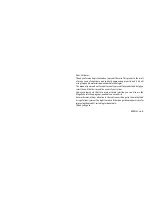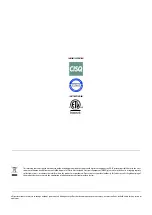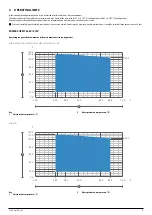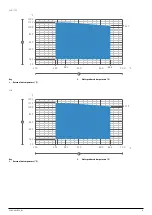
10
22.05 – 4037365_03
3
GENERAL DESCRIPTION
Chiller offering chilled/hot water, designed to mit air conditioning needs in residen-
tial / commercial complexes or industrial applications.
Indoor units with Scroll compressors, centrifugal fans and plate heat exchangers.
In order to correctly install the unit, observe all the instructions provid-
ed in this manual, all the laws and regulations in force (EN 378, national
and local standards) and in any case an additional risk analysis must be
carried out by the system designer.
This chapter describes and gives explanations to the additional residual risks origi-
nating from the refrigerating systems when using refrigerant.
— The following information may in no way replace the risk assessment for the
refrigeration system at the installation site;
— The end user (the Operator or plant manager/owner) bears the responsibility
at the installation site;
— Avoid the presence of ignition sources during the entire service life of the refrig-
erant system (transport/storage/installation/operation/maintenance);
— Refers to international standard and regulation to evalute ignition sources (e.g.
EN1127-1) according to the refrigerant flammability characteristics.
GENERAL SAFETY RECOMMENDATION
Take the risks, measures, advice and recommendations indicated on the refrigerant
safety data sheet into account.
During the whole life of the refrigerating system (trasportation/storage/installa-
tion/operation/mantainance):
— Provide adequate ventilation;
— Don't place or storage the refrigerating system in confined spaces;
— Avoid traps where gases may fall and stagnate;
Avoid open flames and ignition sources near the refrigerant system;
INSTALLATION REQUIREMENTS
In particular, the unit is intended to be connected:
— to a hydronic system that must be designed to be classified according to EN
378-1 as an indirect ventilated system (ref EN 378-1; 2016, par. 5.5.2.2 ), as an
indirect vented closed system (ref EN 378-1;2016, par. 5.5.2.3 ), or as a double
indirect system according to EN 378-1 (ref. EN 378-1; 2016, par. 5.5.2.4 ).
— The intermediate fluid (water or water-glycol mixture) is in direct communica-
tion with the occupied space and a refrigerant leak in the intermediate circuit
must be dissipated to the atmosphere outside the occupied space and in an
area that is suitably ventilated to prevent the generation of explosive atmos-
pheres.
— In particular, for a closed system this condition requires installing a properly
sized mechanical device in a suitable position of the hydronic circuit for the col-
lection and draining of the refrigerant. If drain and/or safety valves are installed
in the unit, they do not in any way replace this device.
— The automatic air drain must be installed in all the highest points of the hydrau-
lic circuit, outside the building and far from sources of ignition. In order to gua-
rantee that flammable refrigerant will not flow into the environment in the case
of leaks, it is recommended to install it with a primary and secondary circuit.
— The are occupied by the unit and in its immediate vicinity must be made acces-
sible only by authorised personnel, also installing a fence if necessary;











































